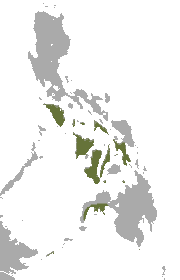| Little golden-mantled flying fox | |
|---|---|
| Scientific classification | |
| Kingdom: | Animalia |
| Phylum: | Chordata |
| Class: | Mammalia |
| Order: | Chiroptera |
| Family: | Pteropodidae |
| Genus: | Pteropus |
| Species: | P. pumilus |
| Binomial name | |
| Pteropus pumilus Miller, 1911 | |
 | |
| Little golden-mantled flying fox range | |
The little golden-mantled flying fox (Pteropus pumilus) is a species of bat in the family Pteropodidae. It is found in Indonesia and the Philippines. Its natural habitat is subtropical or tropical dry forests.
